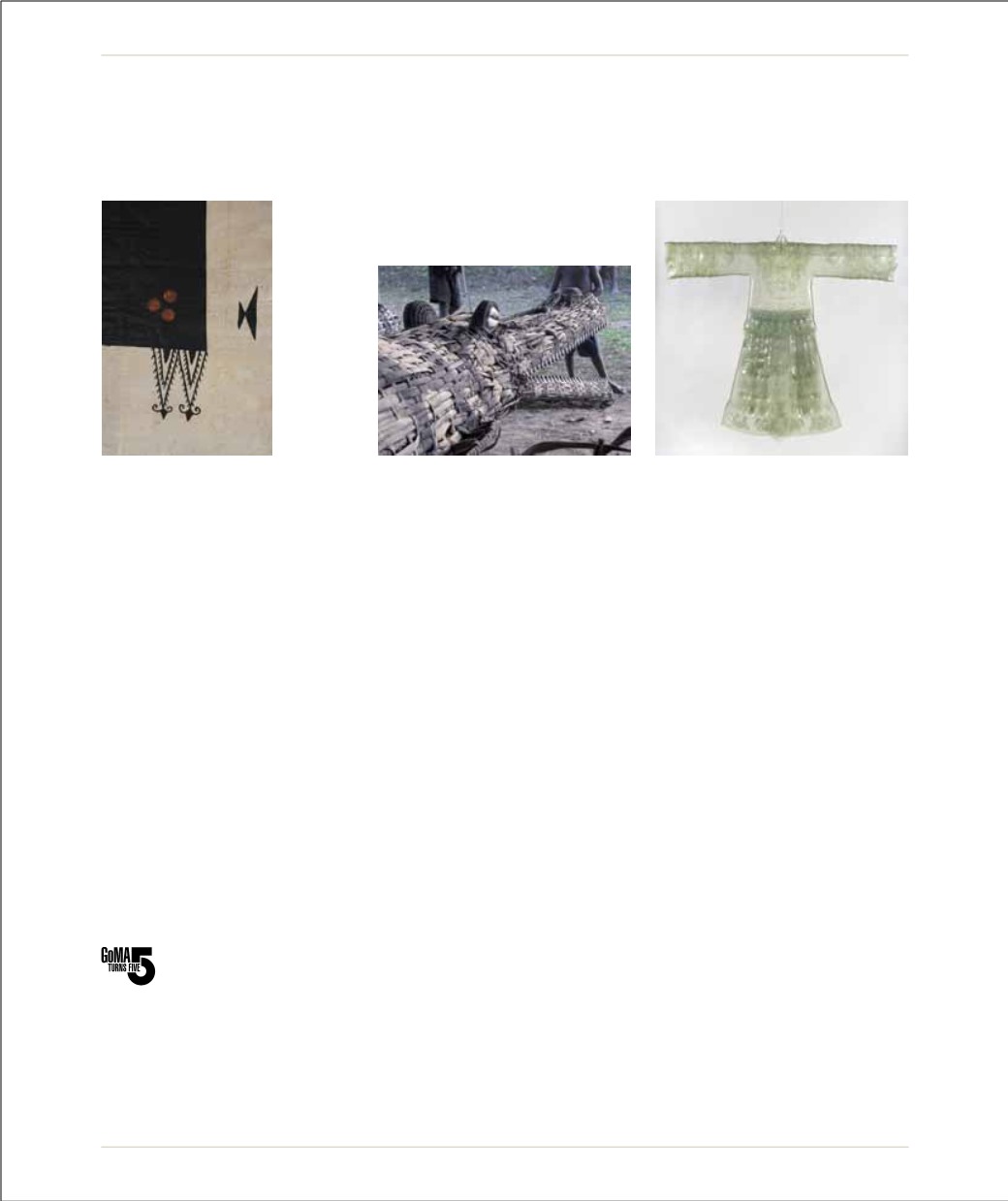
94
REWINd |
RELIVE |
Reveal
| RELATIONSHIPS | REmEmbER | REAdy
AsIA PACIFIC ArT ACQuIsITIons
Kulupu Falehanga ‘i Teleiloa
Ngatu tā’uli
2011
this ngatu tā’uli, customarily made
and used for chiefly ceremonies, was
commissioned by the gallery. created
by a tongan art group based in auckland
working with a women’s art group from
tatakamotonga, tonga, the ngatu is 22
metres in length and has a predominantly
‘uli (black) composition.
this dramatic visual presence is part of its
meaning, with ngatu tā’uli considered within
the wider tongan understanding of time and
space as relating to the expansive fefine
(female) forms of night, moon, darkness
and death.
For the members of kulupu Falehanga
‘i teleiloa, the creation of a ngatu tā’uli
presents opportunities for artistic expression
and the acquisition of cultural knowledge.
Kulupu Falehanga ‘i Teleiloa
/ New Zealand/
Tonga est. 2010 /
Ngatu tā’uli
(detail) 2011 / Hiapo
(paper mulberry) with koka (pigment from koka
tree) and black commercial paint / 2215 x 412cm
(irreg.) / Commissioned 2011. Queensland Art
Gallery Foundation
Gibson Kapun, Ganot Kam, willie maso,
Aamus Kamduka
Mavetgowi
(
saltwater crocodile
) 2011
Mavetgowi
and
Palingowi
represent
ancestral figures in the form of crocodiles
of the iatmul people of papua new guinea.
though these masks are life-sized, they
are typical of ceremonial masks used by
initiated men in sinuous dance movements,
resembling the grace with which the
reptiles move through water.
the woven split-cane bodies of
Mavetgowi
and
Palingowi
, painted with local clays,
resemble the camouflaged animals in their
natural environment. cowrie shells traded
with coastal peoples are used for the eyes;
the distinctive shape of the cowrie fixes
audiences with a narrow gaze. trailing leaves
and a raffia skirt are attached to a secondary
structure and complete the masks when
used in performance, disguising the wearer’s
identity — just as vegetation masks the
crocodiles on the banks of the sepik river.
Gibson Kapun, Ganot Kam, Willie Maso, Aamus Kamduka
/
Iatmul people, Yenchen Village, Papua New Guinea /
Mavetgowi
(
saltwatercrocodile
) 2011 / Mask: Woven split cane, cowrie shells,
natural pigments, casuarina wood, chicken feathers, dyed sago leaf,
pangal and bush string / Two components: crocodile: 363 x 60 x 31cm;
kuvuk kuvuk: 55 x 131 x 60cm / Commissioned 2011. Queensland Art
Gallery Foundation
wang Jin
Robe
1999
a significant contribution to the gallery’s
collection of contemporary chinese art is
Robe
by wang Jin. this is an early example
of a major body of work that occupied the
artist for almost a decade. in these works,
the iconic form of the peking opera robe is
rendered in transparent plastic embroidered
with fishing line. the juxtaposition of a
traditional high-cultural form and modern
synthetic material in
Robe
refers to
recent transformations in chinese society,
most pointedly, the rapid evolution of
consumerism.
this work was a gift of an anonymous
donor through the Queensland art gallery
Foundation, donated through the australian
government's cultural gifts program.
Wang Jin
/ China b.1962 /
Robe
1999 / Polyvinyl chloride and fishing
line / 183 x 205.5 x 16.5cm / Gift of an anonymous donor through
the Queensland Art Gallery Foundation 2011. Donated through the
Australian Government's Cultural Gifts Program


